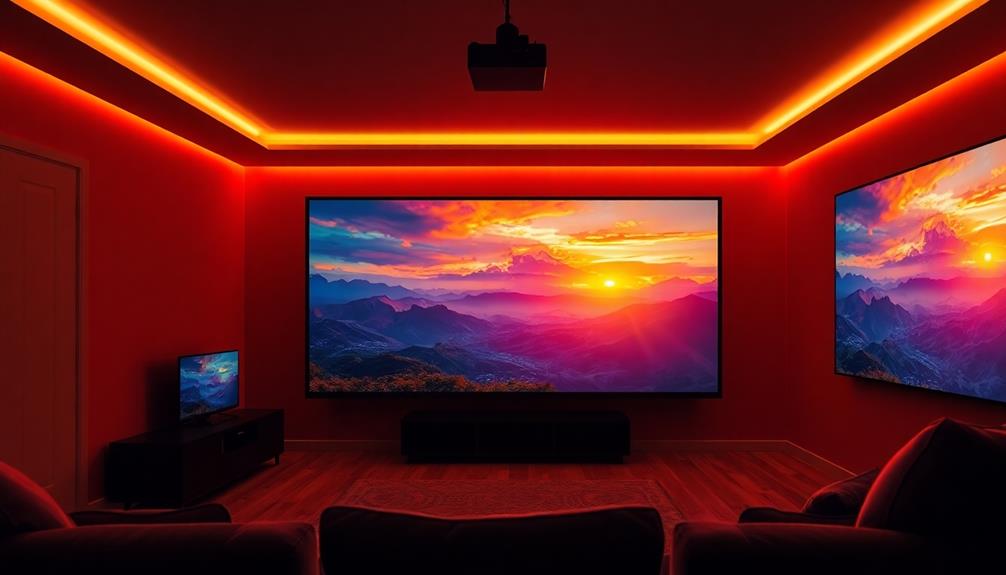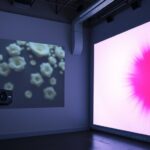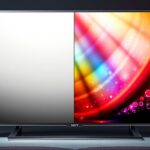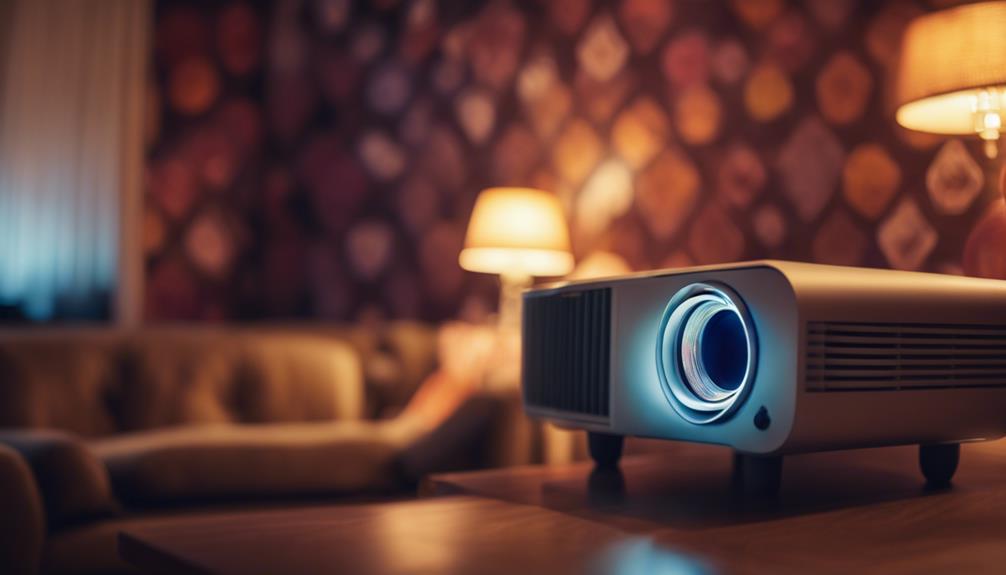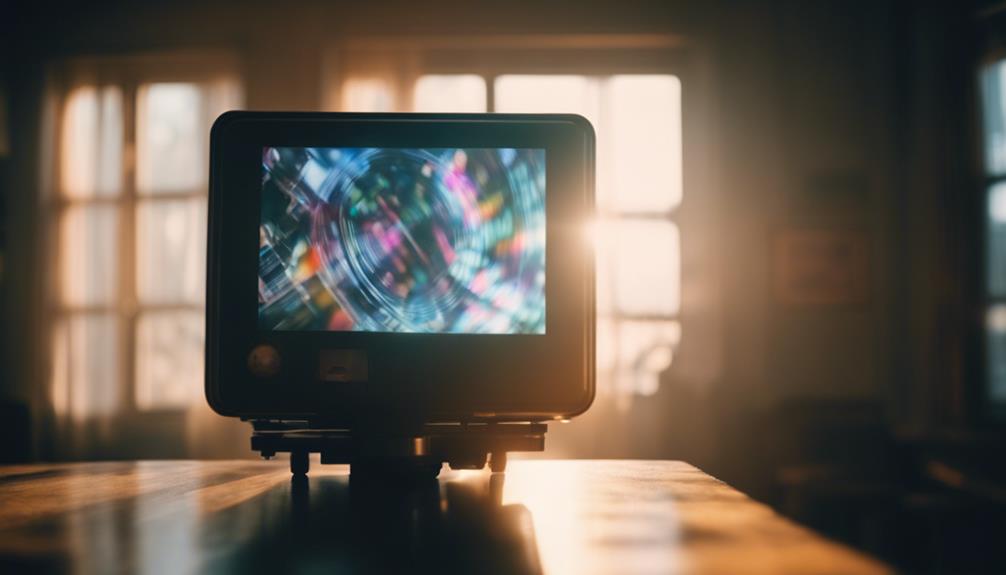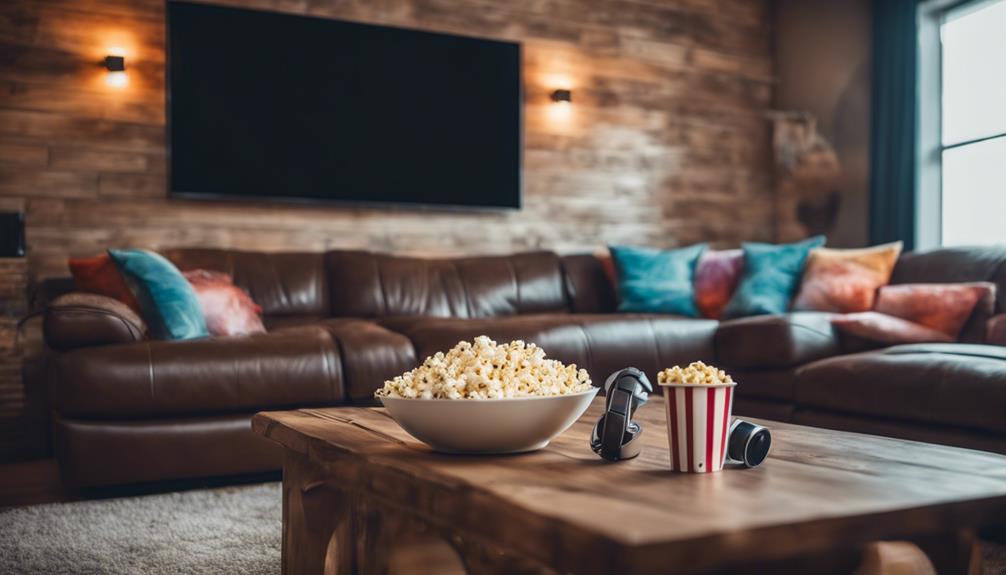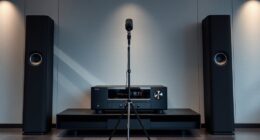When you consider projector HDR compatibility, it's all about enhancing your image quality. HDR boosts color accuracy and contrast ratios, making your visuals more vibrant and engaging. You'll notice deeper blacks and brighter whites, which elevate the overall viewing experience. However, not all projectors achieve the necessary brightness levels for peak HDR performance. Check for compatibility with HDR standards like HDR10 and Dolby Vision to guarantee you get the best results. Plus, your viewing environment plays a significant role, affecting how vividly colors appear. Stick around to discover more about maximizing your HDR setup!
Key Takeaways
- HDR technology enhances image quality by expanding brightness levels, resulting in better contrast between bright whites and dark blacks.
- Projectors must achieve at least 1,000 nits brightness and a contrast ratio of 1,000:1 for optimal HDR performance.
- Compatibility with HDR standards like HDR10 and Dolby Vision is crucial for accurate color reproduction and scene optimization.
- A wider color gamut and 10-bit color depth contribute to more vibrant colors and smoother gradients in HDR content.
- The viewing environment significantly impacts HDR performance; controlling ambient light can enhance color vibrancy and contrast.
Understanding HDR Technology
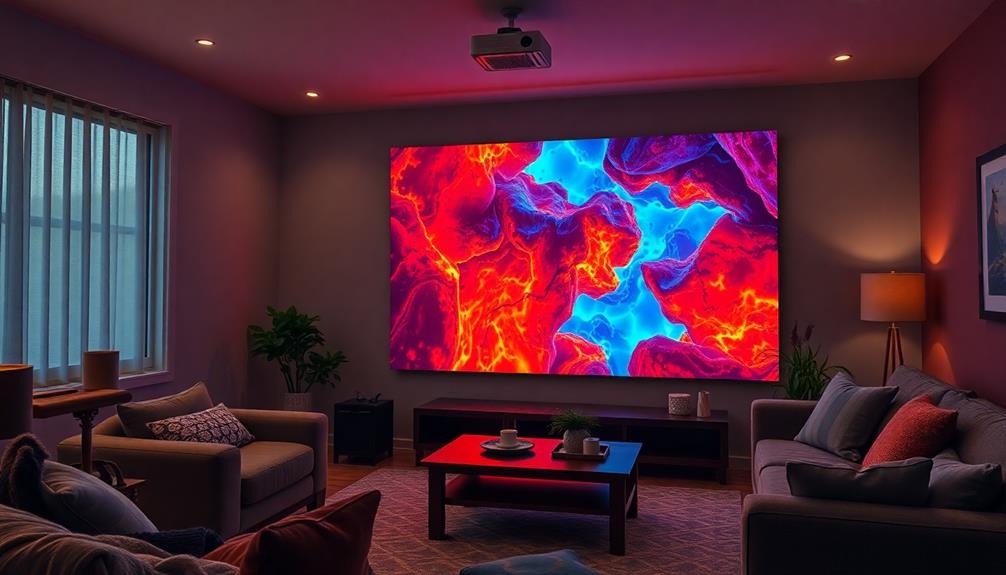
What makes HDR technology a game-changer in visual experiences? HDR, or High Dynamic Range, greatly enhances image quality by expanding the range of brightness levels. This means you'll see more vivid and lifelike images than with standard dynamic range (SDR) content.
With HDR, the contrast between the brightest whites and the darkest blacks becomes more pronounced, giving you a richer visual experience.
To achieve stunning HDR quality, projectors must undergo unique calibration that differs from HDR TVs. This can pose challenges when presenting HDR content effectively.
HDR standards like HDR10 and Dolby Vision set specific requirements for luminance, color space, and bit depth, ensuring that you enjoy the full benefits of HDR. For instance, HDR10 supports 10-bit video and peak brightness of up to 1,000 nits.
The successful implementation of HDR in projectors hinges on dynamic range, color reproduction, and precise tone mapping. These elements work together to maintain seamless gradations between light and dark, ultimately providing you with an immersive viewing experience.
Understanding these aspects of HDR technology can help you appreciate the enhancements it brings to your visual enjoyment.
Benefits of HDR in Projectors
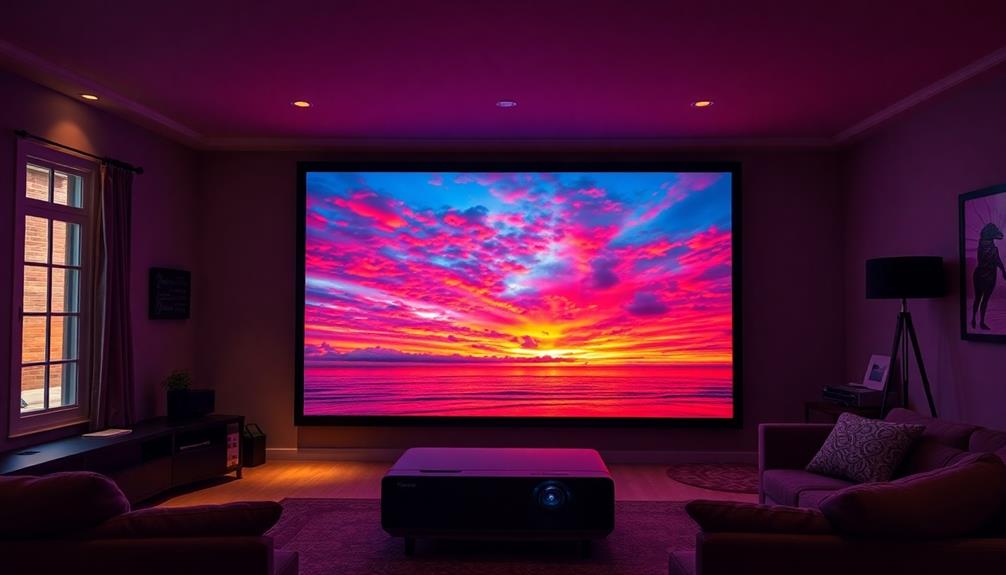
When you incorporate HDR into your projector, you'll notice a remarkable enhancement in color accuracy and contrast ratios.
This technology allows for vivid colors and deeper blacks, making your visuals pop like never before.
Whether you're watching movies or giving presentations, HDR elevates your viewing experience to new heights.
Enhanced Color Accuracy
With HDR technology, projectors bring a remarkable enhancement to color accuracy, transforming your viewing experience.
You'll notice a wider color gamut, like Rec. 2020, which allows your projector to display more vibrant and lifelike colors than traditional SDR displays. This means the reds, greens, and blues pop in ways you've never seen before, making every scene enchanting.
HDR projectors can reproduce subtle shades and details in both bright and dark areas, improving overall image depth. You'll appreciate how realistic colors appear, drawing you into the action.
The use of 10-bit color depth in HDR content means your projector can deliver over a billion possible color variations. This results in smoother gradients and greatly reduces banding during color shifts.
Enhanced tone mapping in HDR projectors allows for better adaptation of content brightness to your display's capabilities. This guarantees that highlights and shadows are rendered with greater fidelity, making your viewing experience even more immersive.
Accurate color reproduction in HDR projectors means you experience content as intended by creators, enhancing your enjoyment of movies, games, and other visual media.
Prepare to be amazed by how HDR elevates your viewing to a whole new level!
Improved Contrast Ratios
HDR technology dramatically boosts contrast ratios in projectors, making it easier to distinguish between the brightest whites and the deepest blacks. This enhancement is vital for creating lifelike images that draw you into the content.
With HDR projectors, you'll notice improved local contrast enhancement, leading to deeper image depth and more dynamic scenes. Additionally, the contrast ratio plays an important role in the overall image quality, impacting perceived sharpness and clarity of images, especially during dark scenes, as seen in the role of contrast ratio in projector image quality.
By utilizing dynamic metadata, these projectors optimize brightness levels for each scene, ensuring that both bright highlights and dark shadows are displayed with clarity. Achieving a contrast ratio of at least 1000:1 is essential for fully realizing HDR content's potential, greatly enhancing your overall viewing experience.
Moreover, the implementation of dynamic iris technology allows HDR projectors to adjust light output based on the scene requirements, further optimizing contrast for various brightness levels. This means you get richer blacks and more vivid whites, improving image quality across all types of content.
With HDR's wide color gamut capabilities, the colors you see will be more vibrant and accurate compared to standard dynamic range projectors. Embracing HDR technology transforms your viewing experience, ensuring every detail pops off the screen.
Key HDR Standards Explained
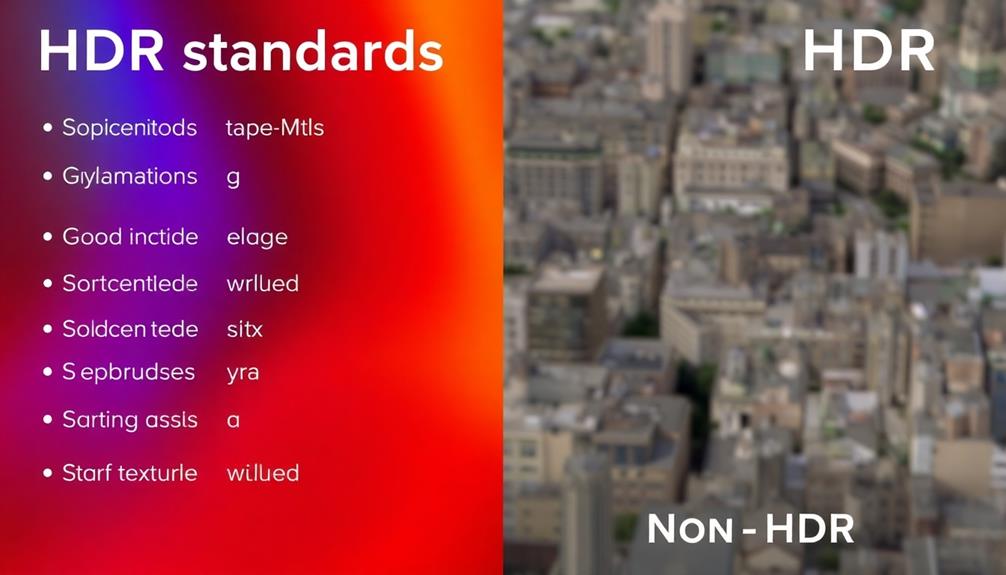
How do the various HDR standards impact your viewing experience? Understanding these HDR standards can greatly enhance your enjoyment of HDR content. Here's a quick overview of the most important ones:
- HDR10: This is the most widely adopted standard, supporting 10-bit video and peak brightness of up to 1,000 nits. However, it lacks dynamic metadata, which can result in inconsistent image quality during playback.
- Dolby Vision: This advanced standard uses dynamic metadata to adjust settings scene-by-scene, elevating brightness and contrast. It supports up to 12-bit video and can reach peak brightness levels of 4,000 nits, providing richer colors and an overall better HDR experience.
- HDR10+: Building on HDR10, this standard incorporates dynamic metadata to optimize brightness and contrast on a frame-by-frame basis, improving image quality and consistency.
Other standards like HLG and Technicolor Advanced HDR also serve specific audiences, such as live broadcasts and backward compatibility.
Challenges of Projector HDR
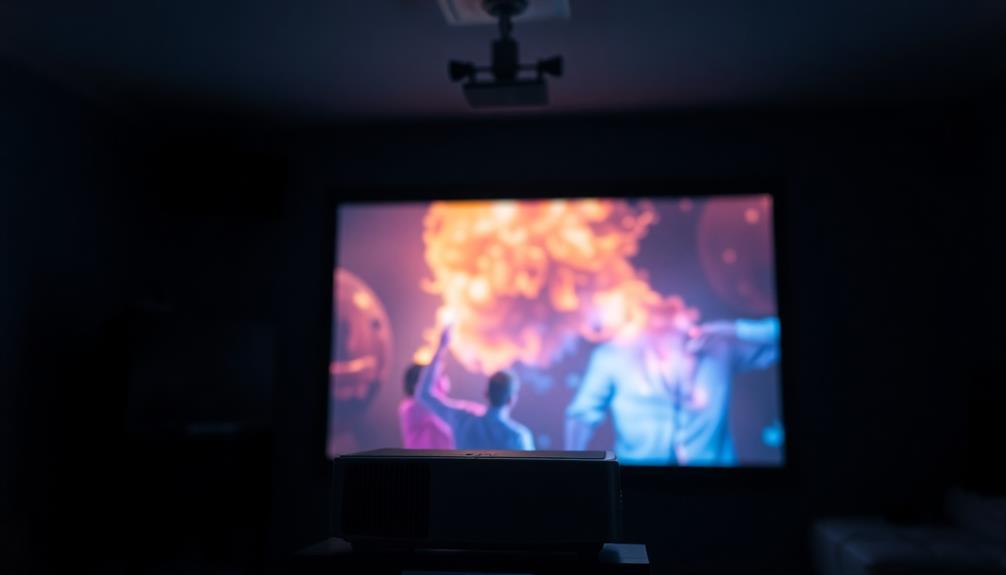
Despite the allure of HDR content, projectors face significant challenges in delivering a truly immersive viewing experience. One major hurdle is their inability to dim light at the pixel level, which limits their dynamic range compared to OLED and local dimming LCD technologies. This limitation means you mightn't see the full potential of HDR images, as the contrast between bright highlights and dark shadows is less pronounced.
Additionally, most projectors struggle with brightness levels, often falling short of the 1,000 nits required for ideal HDR performance. Without sufficient brightness, the vibrancy of HDR visuals diminishes, leaving you with a lackluster experience.
Current projector technologies, including DLP, LCD, and LCoS, also grapple with achieving a wide color gamut (WCG), which is vital for accurately rendering HDR colors.
Moreover, many projectors employ guesswork in HDR mapping, which can lead to a loss of highlights and color saturation. As a result, consumer expectations for HDR quality often exceed what projectors can deliver, making it difficult to reproduce the intended detail and brilliance of HDR images.
It's important to weigh these challenges when considering projector HDR compatibility.
Importance of Viewing Environment
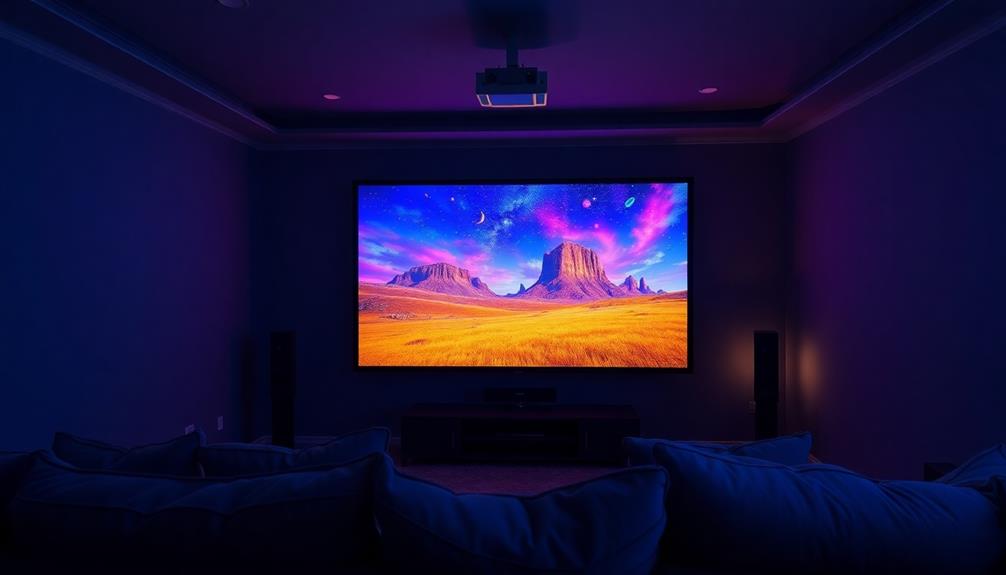
The viewing environment plays an essential role in maximizing the benefits of HDR technology. To truly appreciate HDR performance, you need to take into account factors like ambient light, screen size, and brightness.
Here are three key elements to guarantee an ideal setup:
- Control Ambient Light: Minimize external light sources that can wash out the vibrant colors and contrast that HDR offers. Blackout curtains or dedicated home theater spaces can greatly enhance your experience.
- Choose the Right Screen Size: For home use, aim for a screen size between 100 to 120 inches. This range strikes a balance, allowing you to appreciate the detail and immersion that HDR provides without straining your eyes.
- Guarantee Proper Brightness: Brightness, measured in ANSI lumens, is essential. Higher lumens are necessary to maintain vibrant colors and contrast in well-lit rooms, so select a projector that meets your needs based on your viewing environment.
Technical Specifications of HDR
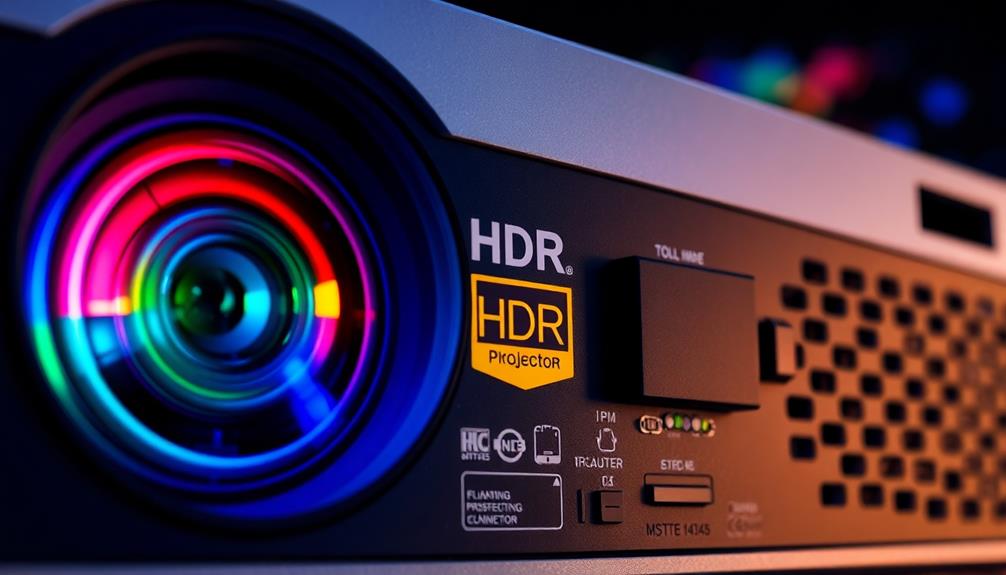
Understanding the technical specifications of HDR is essential for optimizing your viewing experience. HDR technology relies on luminance measured in nits, with displays ideally reaching a peak brightness of at least 1,000 nits. Unfortunately, many projectors still fall short of this benchmark, which can impact overall image quality.
Dynamic range plays an important role in HDR performance, requiring at least 13 stops of contrast compared to the 6 stops in standard dynamic range (SDR) displays. This expanded dynamic range allows for greater detail in both highlights and shadows, enhancing your visual experience.
Additionally, HDR supports a wider color space, significantly with formats like Rec. 2020, which enables a broader range of colors compared to traditional formats. This is essential for achieving more vibrant and nuanced images.
HDR content typically uses 10-bit data per channel, allowing for over a billion color combinations, further elevating image quality.
Compatibility With HDR Formats
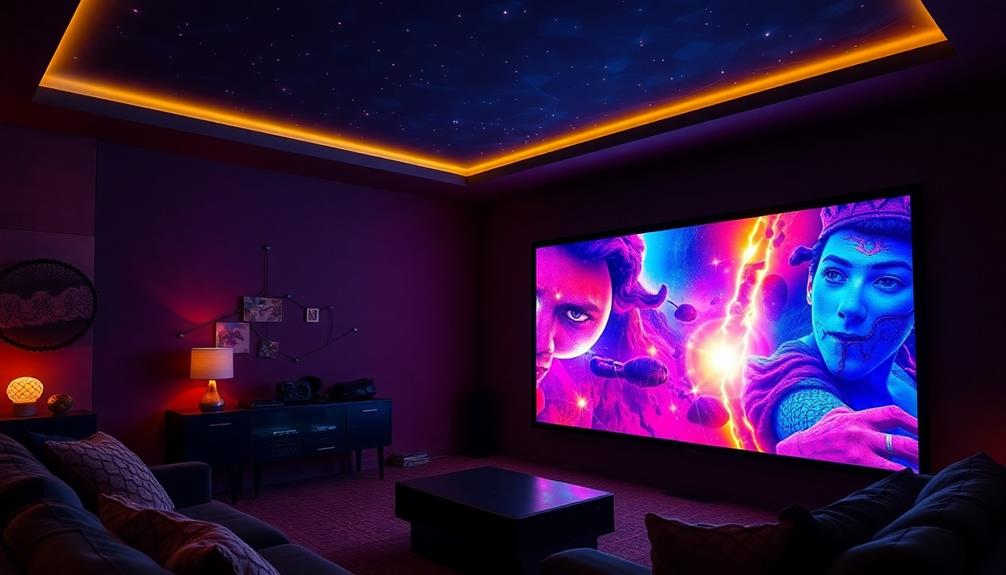
When you're choosing an HDR projector, it's essential to check which HDR standards it supports, like HDR10 and HLG.
You'll want to take into account how well it performs with specific formats, as some projectors may not handle every type of HDR content effectively.
Additionally, think about the compatibility with your favorite streaming platforms to guarantee you're getting the best viewing experience.
Supported HDR Standards
Steering through the world of HDR-compatible projectors means you'll encounter various standards that dictate how well your device can display high dynamic range content. Knowing the supported HDR standards can make or break your viewing experience.
Here's what to look for:
- HDR10: This is the most widely supported standard, transmitting static metadata. It's vital for streaming platforms like Netflix and Amazon Prime.
- Dolby Vision: Offering superior image quality, Dolby Vision uses dynamic metadata, adjusting scene-by-scene for enhanced visuals. However, it requires licensing, so not all projectors support it.
- HDR10+: Similar to Dolby Vision, HDR10+ also uses dynamic metadata, allowing for improved brightness and contrast, but it's less common among projectors.
Before you purchase a projector, always check the projector specifications for HDR format support. Many projectors will support HDR10 and HLG formats, which are essential for streaming and broadcast content.
However, not every projector can accurately display HDR content across different formats, so verify compatibility to get the best possible image quality.
Format-Specific Performance
Maneuvering the landscape of HDR formats can be tricky, especially when it comes to projector performance. Understanding which HDR format your projector supports is essential for achieving the best possible image quality.
Most HDR-compatible projectors make it easy to enjoy High Dynamic Range content, but compatibility varies. For instance, HDR10 is widely adopted, supporting 10-bit video and peak brightness of around 1,000 nits, making it a standard for many projectors. This means you'll likely find excellent performance with HDR10 content.
However, if you want to experience the dynamic adjustments offered by Dolby Vision, check if your projector supports this premium HDR format. While it enhances scene-by-scene brightness and color accuracy, it requires specific licensing, so not all projectors can handle it.
HLG, or Hybrid Log-Gamma, is another option, particularly suited for live television HDR content.
Ultimately, you need to verify that your projector is compatible with the HDR formats preferred by your content providers to maximize your viewing experience. Knowing these details can greatly enhance your enjoyment of High Dynamic Range films and shows.
Content Compatibility Considerations
As you explore HDR content, it's crucial to think about your projector's compatibility with various HDR formats. The right projector can greatly enhance your viewing experience, but not all projectors support every format.
Here are three key considerations for verifying HDR compatibility:
- Check Projector Specifications: Always confirm that your projector supports the HDR formats you plan to use. Common formats include HDR10, HLG, and sometimes Dolby Vision or HDR10+. Each model may have different capabilities.
- Content Platforms: Popular streaming services like Amazon Prime and Netflix offer HDR content in formats like HDR10 and Dolby Vision. Make sure your projector can decode these formats for the best viewing quality.
- Blu-ray Considerations: Many Blu-ray discs come with multiple HDR formats. Verify compatibility before purchasing to avoid disappointment with your home theater system.
As the demand for HDR content continues to rise, understanding these compatibility factors will help you make informed decisions, making certain your projector delivers stunning visuals and an enjoyable viewing experience.
Don't overlook the importance of HDR compatibility when upgrading your home theater systems!
Recommended HDR Projectors
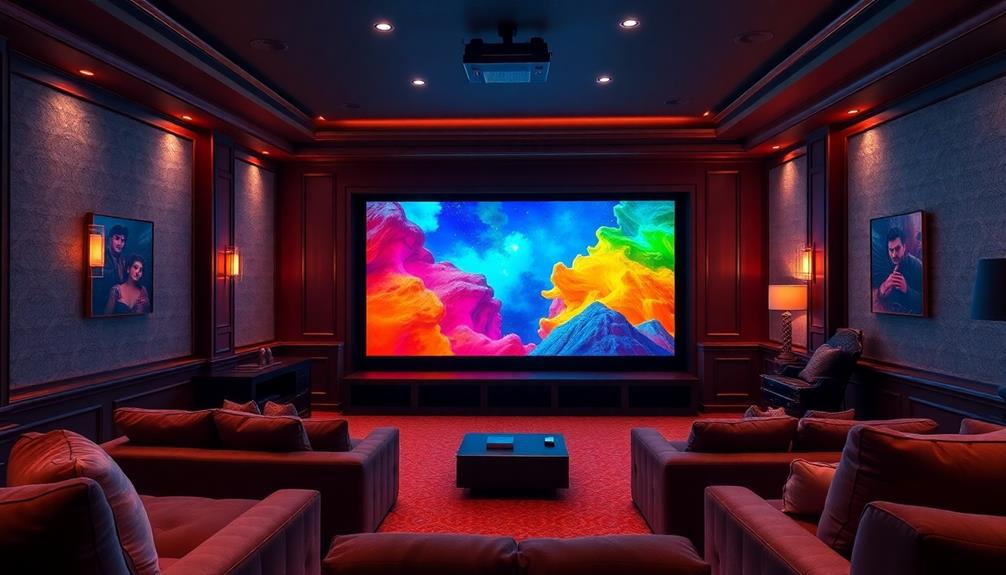
When you're looking for the best HDR projectors, several models stand out due to their impressive features and performance.
The Formovie THEATER is a top choice, compatible with Dolby Vision and HDR10, delivering vibrant colors and enhanced contrast for an immersive HDR video experience.
If you're considering the BenQ HT3550, keep in mind that while it supports HDR10, its brightness and color accuracy may fall short; checking performance reviews is essential to gauge its true HDR capability.
Another excellent option is the Epson Home Cinema 5050UB, known for its advanced 3LCD technology that achieves high brightness and a wide color gamut, resulting in lifelike images.
When selecting your HDR projector, make sure it supports at least 10-bit color depth, which is vital for the rich colors and gradients you expect from HDR content.
Additionally, consider the brightness output measured in ANSI lumens. Projectors like the Optoma UHD55, with higher lumens, are better suited for HDR viewing in well-lit environments, ensuring you get the most out of your HDR video experience.
Future of HDR in Projection
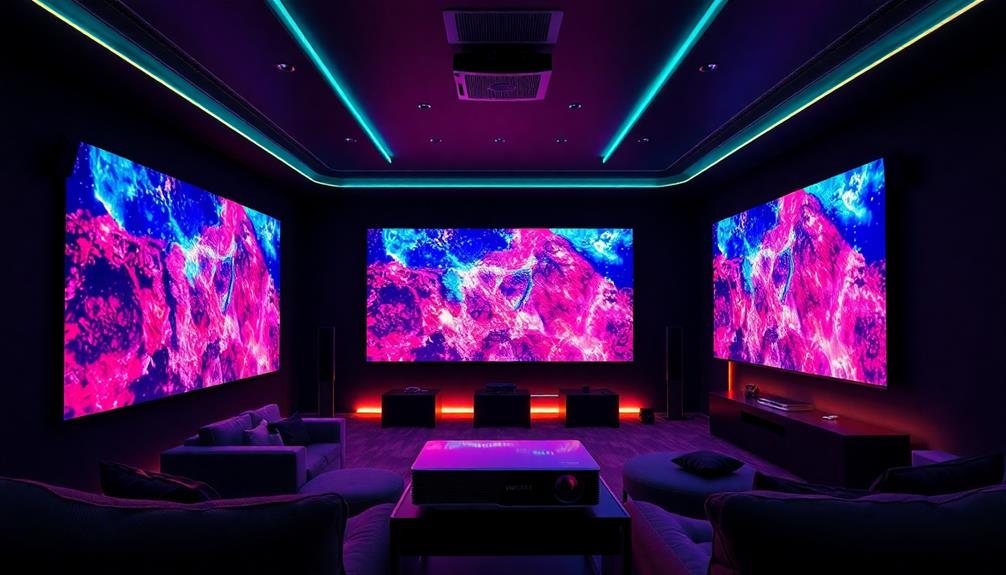
While the future of HDR in projection technology looks promising, significant advancements are on the horizon that will reshape your viewing experience. As manufacturers push for true HDR, you'll notice improvements in several key areas:
- Dynamic Tone Mapping: This technique will refine how HDR content is rendered, allowing for more precise adjustments tailored to each scene's characteristics. Expect better image quality as a result, similar to how heat pumps can reduce energy consumption for more efficient home climate control.
- Brightness and Color Accuracy: Advancements in laser and hybrid light sources will enhance both brightness and color accuracy, making the vibrancy of HDR content truly pop.
- Affordability of HDR-Compatible Projectors: The industry is moving toward more cost-effective options, making advanced HDR technology accessible to a broader audience without compromising performance.
As we embrace the growth of 4K UHD projectors with improved HDR capabilities, you'll experience richer visual experiences with higher pixel density and enhanced color depth.
Keep an eye out for these developments, as they promise to elevate your home theater setup to new heights of image quality and enjoyment.
Frequently Asked Questions
Does HDR Improve Picture Quality?
Yes, HDR improves picture quality considerably. You'll notice enhanced contrast, vibrant colors, and greater detail in shadows and highlights, making images more lifelike and immersive. It truly elevates your viewing experience to a whole new level.
What Is an HDR Compatible Projector?
An HDR compatible projector supports high dynamic range content, enhancing your viewing experience. It displays a broader color range and improved brightness, allowing you to see more details in both dark and bright scenes.
What Is the Difference Between HDR and Non HDR Projectors?
You'll notice a huge difference between HDR and non-HDR projectors. HDR ones deliver brighter highlights, deeper blacks, and a wider color range, making your viewing experience far more vibrant and immersive compared to their non-HDR counterparts.
What Determines Picture Quality in a Projector?
Picture quality in a projector's determined by brightness, contrast, and color accuracy. You'll want high ANSI lumens, a wide color gamut, and advanced technology like DLP or LCD for the best viewing experience.
Conclusion
In the world of home entertainment, embracing HDR compatibility in projectors isn't just a choice; it's an invitation to experience your favorite films and games like never before. As you plunge into the vivid colors and breathtaking detail that HDR offers, consider this: why settle for ordinary when extraordinary is within reach? By understanding the nuances of HDR technology and selecting the right projector, you can transform your viewing experience into something truly spectacular. The future of entertainment awaits you.
